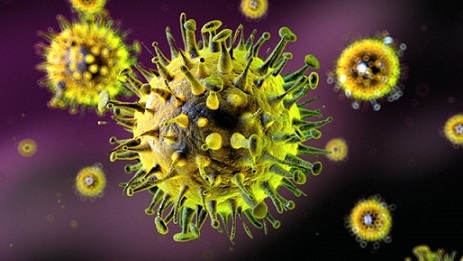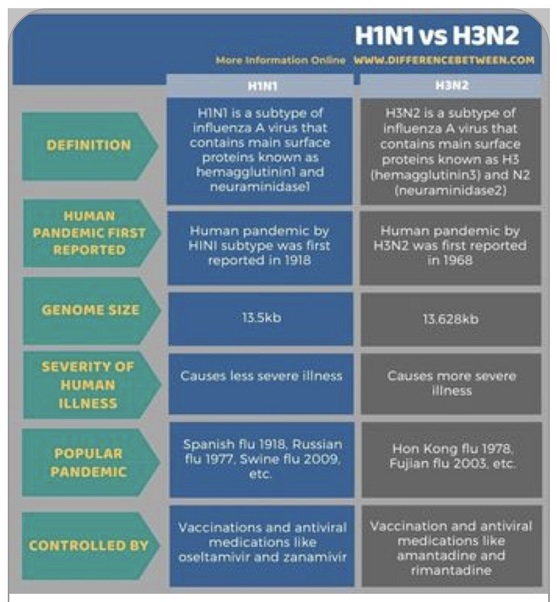BREAKING! India Facing Serious Influenza A H3N2 Outbreak With Many Requiring Hospitalization And Supplemental Oxygen!
H3N2 News - India Outbreak Mar 06, 2023 2 years, 9 months, 2 weeks, 4 days, 11 hours, 3 minutes ago
H3N2 News: The Indian Council of Medical Research (ICMR) has officially reported that the current mysterious respiratory disease affecting many locals across the country is due to the virus called Influenza A subtype H3N2.
https://twitter.com/ICMRDELHI/status/1631488076567687170

In the last 5 weeks there has been growing cases of individuals reporting contracting flu but with more serious symptoms and also with more prolonged duration in various cities across India.
India’s pan respiratory virus surveillance that was established by ICMR/DHR across the whole country has detected rising cases of influenza A H3N2 since late December 2022 but the caseloads have become exponential since mid-February 2023.
https://influenza.icmr.org.in/public_dashboard/?fbclid=IwAR2ZeeaqfR81u9MZeRAxauHH3KPDoDbNRlSBKS38kIvi0c86pwWO9wyto6I
At the same time however, local virologists also warn that newer SARS-CoV-2 XBB sub-lineages are also starting to gain a foothold in the country and that a scenario of a ‘twindemic’ of influenza and COVID-19 is very likely in the coming weeks.
Infections by the H3N2 virus are more serious that previous human flu viruses and many end up with more serious symptoms and the need for supplemental oxygen.
According to the ICMR, “Out of the hospitalized patients with influenza A H3N2, about 92 per cent are suffering from fever, 86 per cent from cough, 27 per cent from breathlessness, 16 per cent with wheezing, and additionally, 16 per cent had clinical signs of pneumonia and 6 per cent has seizures. Also, 10 per cent of patients who have H3N2 needed supplemental oxygen, and 7 per cent required ICU care.”
Indian health authorities are asking locals to take more safety precautions including masking, washing hands frequently and also to avoid crowded settings.
To prevent hospitals being overstressed, those with manageable symptoms are advised to drink lots of fluids and rest and to take over the counter (OTC) NSAIDs such as paracetamol for fevers and pains. Only those who are experiencing more serious symptoms are advised to visit the hospitals.
The influenza A virus subtype H3N2 (A/H3N2) is a subtype of viruses that causes influenza (flu). H3N2 viruses can infect birds and mammals. In birds, humans, and pigs, the virus has mutated into many strains. H3N2 is a subtype of the viral genus Influenza virus A, which is an important cause of human influenza. Its name derives from the forms of the two kinds of proteins on the surface of its coat, hemagglutinin (H) and neuraminidase (N). By reassortment, H3N2 exchanges genes for internal proteins with other influenza subtypes.
Past history and
H3N2 News coverages have shown that in years in which H3N2 is the predominant strain, there are more hospitalizations.
r />
With H5N1 Avian Flu And Omicron Sub-lineages In Extensive Circulation, Doomsday Scenario Of Reassortant H3N2 Strain Emerging Very Likely!
It should be noted that the Hong Kong Flu was a flu pandemic caused by a strain of H3N2 descended from H2N2 by antigenic shift, in which genes from multiple subtypes reassorted to form a new virus. This pandemic of 1968 and 1969 killed an estimated one million people worldwide.
The Hong Kong Flu pandemic infected an estimated 500,000 Hong Kong residents, 15% of the population, with a low death rate. In the United States, about 100,000 people died!
Surprisingly, both the H2N2 and H3N2 pandemic flu strains contained genes from avian influenza viruses. The new subtypes arose in pigs coinfected with avian and human viruses and were soon transferred to humans. Swine were considered the original "intermediate host" for influenza, because they supported reassortment of divergent subtypes. However, other hosts appear capable of similar coinfection (e.g., many poultry species), and direct transmission of avian viruses to humans is possible. H1N1 may have been transmitted directly from birds to humans.

https://www.differencebetween.com/what-is-the-difference-between-h1n1-and-h3n2/
Interestingly, The Hong Kong flu strain shared internal genes and the neuraminidase with the 1957 Asian flu (H2N2). Accumulated antibodies to the neuraminidase or internal proteins may have resulted in much fewer casualties than most pandemics. However, cross-immunity within and between subtypes of influenza is poorly understood.
The Hong Kong flu was the first known outbreak of the H3N2 strain, though there is serologic evidence of H3N2 infections in the late 19th century. The first record of the outbreak in Hong Kong appeared on 13 July 1968 in an area with a density of about 500 people per acre in an urban setting. The outbreak reached maximum intensity in two weeks, lasting six weeks in total. The virus was isolated in Queen Mary Hospital.
By July 1968, extensive outbreaks were reported in Vietnam and Singapore. By September 1968, it reached India, the Philippines, northern Australia and Europe. That same month, the virus entered California from United States troops returning from the Vietnam War. It reached Japan, Africa and South America in 1969.
Researchers are conducting genomic studies on the H5N2 strains identified in India as it clinical manifestations seems to be different form earlier strains. The new Indian strain seems to be causing more serious symptoms and also the infection period is more prolonged ie between 7 to 18 days unlike the earlier strains that were only between 3 to 5 days.
With the H3N2 virus very susceptible to reassortants events and with extensive presence of the H5N1 Avian Flu virus and also the ever-evolving Omicron strain in circulation, scientists are worried that a possible more pathogenic and lethal H3N2 subtype is likely to emerge!
To date the only effective antivirals to treat H3N2 infections are amantadine and rimantadine.
However local physicians in India are reporting that those hospitalized with the current H3N2 subtype do not seem to be responding to these antivirals.
The WHO has been alerted about the situation and research is underway to determine as to whether the H3N2 strains that is currently circulating in India is different or has undergone any mutations etc.
For the latest H3N2 News, keep on logging to Thailand Medical News.
References:
https://www.ncbi.nlm.nih.gov/pmc/articles/PMC6149781/
https://www.nature.com/articles/s41598-022-19228-y
https://pubmed.ncbi.nlm.nih.gov/36366512/
https://www.cdc.gov/flu/swineflu/variant/h3n2v-cases.htm
https://www.ncbi.nlm.nih.gov/pmc/articles/PMC7144439/
https://www.cambridge.org/core/journals/journal-of-global-history/article/viral-surveillance-and-the-1968-hong-kong-flu-pandemic/B18E782E9F792920192E0538B21781C4

